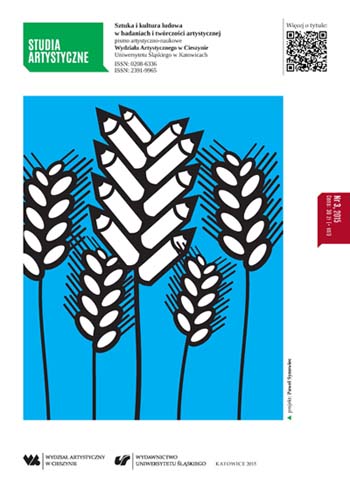Folklor we wczesnej twórczości fortepianowej Witolda Lutosławskiego
Folklore in the early piano compositions by Witold Lutosławski
Author(s): Ewa NideckaSubject(s): Fine Arts / Performing Arts, Customs / Folklore, Music
Published by: Wydawnictwo Uniwersytetu Śląskiego
Keywords: Witold Lutoslawski; folklore; compositions for piano; sound characteristics; the metro-rhythmic characteristics
Summary/Abstract: Early compositions by Witold Lutoslawski developed in the harsh realities of the turn of the 50s and 60s of the 20th century. This was the period when foundations of his compositional technique crystallized, which consisted in cultivating the classical ideal of a clear structure, and maintaining the proportion and logic of the course of music, and the classical principle of balancing the employed measures. Some elements of the compositional style are invariable in all phases of his work. These include: characteristics of harmonic language, organization of the pitch of sound, types of form integration which lend it characteristics of morphological cohesion. These features may be observed even in the early stages of Lutoslawski’s creation, which owes its inspiration to folk music. Lutoslawski was influenced by the compositions by K. Szymanowski, B. Bartók, I. Stravinsky. The most significant of the early piano compositions are "Folk Melodies" (1945) and "Bucolics" (1952). In these compositions Lutoslawski referred to the solutions of B. Bartók in terms of formal, sonically-colouristic, textural and metro-rhythmic aspects. When comparing the two series, "Bucolics", which were written seven years later, reveal even greater influence of Bartók. It is are reflected in the use of ostinato, alternate polyrhythm, and in the application of musical scale elements in the melodic construction. Because of the source of folk material, some miniatures in the sonic sphere maintain association with the tradition of mazurka established by Chopin and Szymanowski. This manifests in the employment of the mazurka rhythms and accompaniment characteristic of Polish folk dances.
Journal: Studia Artystyczne
- Issue Year: 2015
- Issue No: 3
- Page Range: 109-114
- Page Count: 6
- Language: Polish

